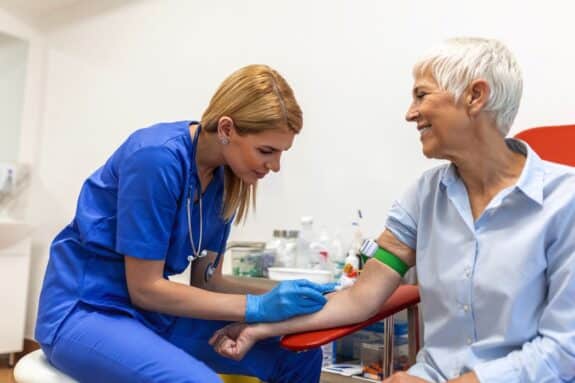Breast cancer remains one of the most common and life-threatening cancers for women worldwide. The good news? When caught early, the survival rate is as high as 99% for Stage I cases. However, detecting cancer at its earliest stages has always been a challenge—until now. A new study has unveiled an innovative method that uses advanced technology to spot early-stage breast cancer subtypes with remarkable accuracy.
For patients and families, this approach could mean faster detection, better treatment plans, and improved outcomes.
Why Early Detection Matters
By the time breast cancer shows symptoms, it is often at an advanced stage, which drastically reduces survival rates. While tools like mammograms are crucial, they have limitations:
- They sometimes miss cancer in its earliest phases.
- They aren’t always precise when identifying subtypes of breast cancer, which is important for tailoring treatment.
That’s where this new research comes in—it can detect breast cancer as early as Stage Ia, which is a game-changer for saving lives.
What’s Different About This Study?
The study, posted in the Journal of Biophotonics, focuses on a non-invasive test using blood samples—this method is known as a “liquid biopsy.” Instead of relying on tissue samples or imaging alone, the researchers used a laser technology called Raman Spectroscopy (RS) combined with machine learning.
- What is Raman Spectroscopy?
- It’s a method that shines light on molecules in the blood, capturing their unique “fingerprint” or pattern.
- These fingerprints change when breast cancer is present.
- How Does Machine Learning Help?
- Machine learning algorithms analyze these fingerprints and recognize patterns linked to different subtypes of breast cancer.
- Think of it like teaching a computer to spot tiny, invisible changes that indicate cancer—even in Stage Ia!
- Why Blood Samples?
- Blood samples are simple, non-invasive, and quick to collect.
- The test can pick up subtle signals of cancer long before it becomes visible on traditional scans.
Detecting Cancer Subtypes With Incredible Accuracy
The study tested blood samples from both healthy individuals and patients with Stage Ia breast cancer. The results were impressive:
- Overall Accuracy: The method had a success rate of up to 95% specificity and 90% sensitivity—that means it can accurately identify cancer while avoiding false alarms.
- Subtype Detection: It successfully classified the four major types of breast cancer:
- Luminal A
- Luminal B
- HER2-enriched
- Triple-Negative Breast Cancer (TNBC)
For families and doctors, this subtype information is critical. Different breast cancer subtypes behave differently, and knowing the exact type ensures patients get the right treatment as soon as possible.
What This Means for Patients
Imagine a future where breast cancer can be spotted before it causes symptoms, and where doctors can customize treatments based on a simple blood test. That’s what this breakthrough brings closer to reality:
- Faster, Early Detection: Spotting Stage Ia cancer means patients can start treatment at the most effective time.
- Personalized Care: By identifying specific subtypes, doctors can target treatments more accurately.
- Non-Invasive and Accessible: Blood tests are much easier for patients compared to invasive biopsies or lengthy procedures.
Why It Matters: Bridging Science and Real Life
Many tools for detecting breast cancer are already out there, but this approach stands out because it’s:
- Highly Accurate at an early stage.
- Accessible for regular monitoring.
- Affordable compared to some advanced methods.
For families, it means hope. For doctors, it offers a tool that could revolutionize how breast cancer is managed and treated.
This research is a huge step, but more work is needed to make it widely available. Larger studies are planned to test this method across diverse groups of patients and different types of cancers. If successful, it could become a standard part of breast cancer screening in the near future.
Science has once again brought us closer to defeating one of the most challenging diseases of our time. With the power of light technology and machine learning, detecting breast cancer early—and knowing exactly what type it is—could soon be as simple as a routine blood test.
For families everywhere, this brings a renewed sense of hope: a future where breast cancer is caught earlier, treated faster, and outcomes are better than ever.







